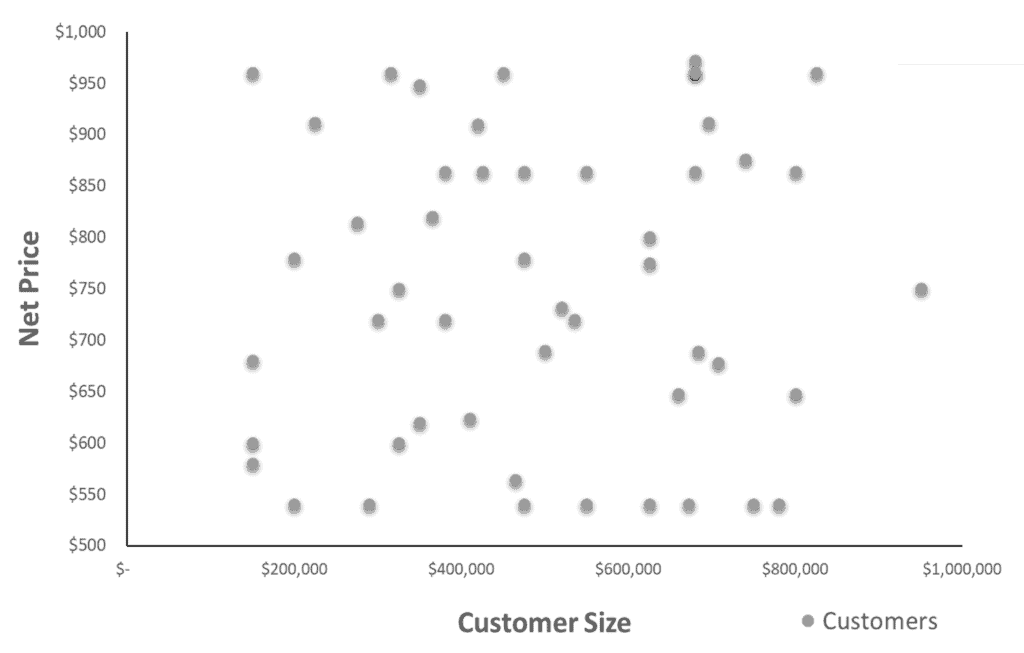Omnichannel is a cohesive sales approach where companies give customers access to their offerings on all channels, platforms, and devices. Those who get omnichannel right will not only attract new customers but also retain existing ones.
Offering a compelling omnichannel experience used to be a nice to have. Now, it’s a requirement for survival. In fact, companies with omnichannel strategies retain 89% of their customers. Plus, the right omnichannel strategy could lead to higher revenues, lower costs to serve, and greater customer satisfaction.
While the benefits of omnichannel are great, the transition to a new sales environment is difficult – especially for B2B companies. Traditional pricing structures have encouraged ad hoc discounting across customers, preventing any ability to streamline prices across channels due to increased visibility. So how can B2B companies successfully transition to an omnichannel model?
5 Elements To Successfully Transition To An Omnichannel Model
Haphazard efforts at omnichannel can destroy value. There are 5 key elements B2B companies need to consider to successfully transition to an omnichannel model:
1. Customer Segmentation
To create a seamless and compelling buying journey, you must put the customer at the center of your omnichannel strategy. Leading companies segment their customers based on similar needs to create targeted offers and increase sales. Further, they map where each group will be migrating to/from a channel standpoint to ensure offerings are set up the right way and relationships are managed consistently across channels.
For example, a large technology company faced increasing pressure from smaller, more customer-centric competitors. To stay competitive, the company conducted extensive research with 500 of their customers, segmenting them based on behavioral attributes to create more targeted and channel-specific offers. As a result, they saw higher satisfaction, reduced churn and generated uplift in digital sales.
2. Holistic Approach
Taking a holistic omnichannel approach enables B2B companies to increase the number and frequency of customer interactions, enhancing the company’s reach and relevance. For example, a specialty manufacturing company developed a holistic B2B omnichannel strategy tailored to the specific needs and characteristics of the company’s business model and customer base. They set up 3 distinct sales channels (field sales, inside sales and distribution), each complemented by 3 supporting functions:
1. A lead generator role was established to generate leads at scale across all channels by leveraging customer and competitor intelligence.
2. A digital enablement role was established to upgrade the company’s online presence (i.e., website, social media, etc.) to address customer needs across the digital buying journey.
3. A dedicated customer service team was established to support customers with ordering and fulfillment.
3. Channel Conflict Management
Pricing is the most common contributor to B2B channel conflict. There is usually no standard price set for offerings. Sales reps discount however they like, leading to large price dispersion among customers. In fact, sometimes smaller customers end up getting larger discounts while larger customers get smaller discounts.
Rather than maintain the status quo, leading omnichannel companies tackle conflict head-on. This is what one industrial company did when it moved to direct online sales to generate higher revenue, increase margin, reduce reliance on third-party distributors and improve customer relationships. Prior to transitioning to omnichannel, the company conducted an intensive price review and leveraged advanced analytics to establish new tiers for customers and optimize pricing. That way, when the time came, their offerings were already set up fairly and equitably. Based on these actions, the company was able to substantially reduce ad hoc discounting and improve its top-line.
4. Sales Enablement
As previously mentioned, a lack of discount guidelines results in varied pricing for customers. To successfully transition to omnichannel, you need to establish and enforce discount guidelines. This means every sales rep follows the same process when determining the price quoted or discounts given to reduce the likelihood of price dispersion.
One chemical company helped its sales reps navigate pricing and discounting by creating sales playbooks to price based on value, manage trade-offs and control cost to serve. Moreover, they invested heavily in technology to increase visibility of guidelines and track what prices are being offered to ensure adherence.
5. Agile Cross-Functional Collaboration
When selling in one channel, there is less pressure for quick pricing decisions. In an omnichannel environment, increased visibility increases the probability of conflict between channel partners and the risk of losing customers. Successful B2B companies implement agile ways of working across teams to enable cross-functional collaboration and make faster pricing decisions. They approach each task with three perspectives – consumer, competitor and financial to implement optimized, market-based pricing strategies that ensure omnichannel success.
Final Thoughts
Getting omnichannel right isn’t easy, but it’s worth the effort. A company-wide commitment to omnichannel excellence can be the deciding factor in business success. Not to mention the added benefit of being more competitive, capturing cost savings, increasing customer satisfaction and reducing churn.
ABOUT THE AUTHOR Avy Punwasee is a Partner at Revenue Management Labs. Revenue Management Labs help companies develop and execute practical solutions to maximize long-term revenue and profitability. Connect with Avy at apunwasee@revenueml.com






